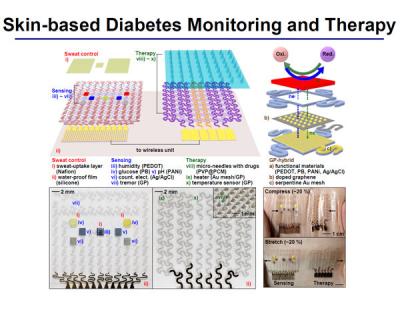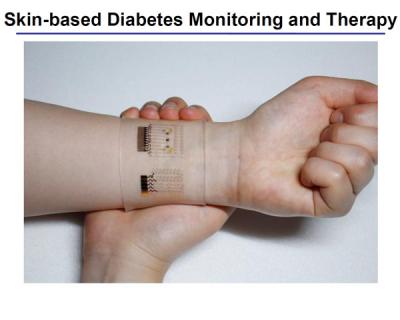Researchers at the Korean Institute for Basic Science (IBS) have developed a wearable graphene-based biomedical device capable of sweat-based glucose monitoring and controlling. The diabetes patch comprises of an electronic chemical sensor that measures glucose levels using human sweat and microneedles that automatically inject medication, posing a real breakthrough for the treatment of diabetes, and possibly other chronic diseases as it will be able to remove the pain and inconvenience that traditional methods inflict.

The researchers improved the device’s detecting capabilities by integrating electrochemically active and soft functional materials on the hybrid of gold-doped graphene and a serpentine-shape gold mesh. The device’s pH and temperature monitoring functions enable systematic corrections of sweat glucose measurements as the enzyme-based glucose sensor is affected by pH (blood acidity levels) and temperature. The connection of the device to a portable power supply and data transmission unit enables the point-of-care treatment of diabetes. The drug (metformin) system consists of microneedles, a temperature sensor and a heater.

Upon detection of abnormally high levels of glucose, a drug is released into the patient’s bloodstream via drug loaded microneedles. The drug is released when the coating in the microneedles is melted by the heater at a temperature of 42 degrees Celsius. The malleable, semi-transparent skin-like appearance of the graphene device provides easy and comfortable contact with human skin, allowing the sensors to remain unaffected by any skin deformations. This enables stable sensing and efficient drug delivery.

